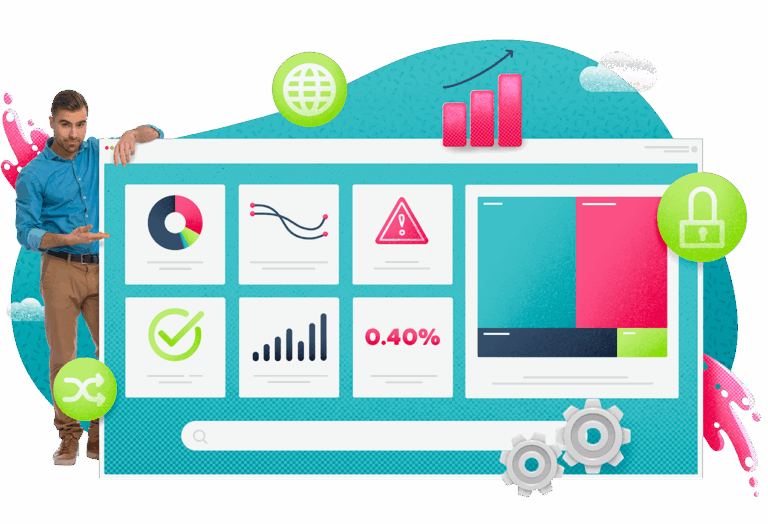The future of ITSM is proactive and predictive managed services. However, despite the benefits of proactive service management, only 40% of organizations currently employ intelligent automation capabilities for service management – which are key to proactive support, according to the ITSM.tools State of Service Management survey.
For CIOs and IT managers looking to shift from a reactive to a proactive model, making this leap might seem impossible. After all, how can you handle the current workload of tickets while also working ahead without hiring more agents, or stretching your existing team too thin?
The solution might seem too obvious, but as the saying goes “sometimes the right answer is the simplest.”
We’ve got a few simple tips and solutions to help you make the change.
What are Proactive Managed Services?
Proactive managed services, sometimes called proactive service management, is just what it sounds like. Proactive managed services use a combination of human and artificial intelligence to work together to monitor devices and maintain all hardware and software in use, while simultaneously identifying potential problems and addressing them before they can cause a negative impact for customers.
Let’s think about what this looks like in the practical sense. Currently, your service desk might be on a more reactive model, where a ticket is submitted and then the service desk works to resolve the ticket. But in a proactive model, you might see an agent periodically checking a software that monitors IT infrastructure for potential problems, then moving to review reports within the ITSM software to look for trends in incidents that may link to greater problems. From there, using the trends and “IT weather report” so to speak, the agent could remotely access the user’s computer to make necessary fixes before an incident even has time to occur. This treads into the territory of “self-healing” IT, which is an evolution of the proactive support model.
If this seems like a futuristic dream, you might be surprised to learn that the scenario above is becoming increasingly realistic.
Before we move onto the benefits of this proactive managed services model, it’s important to note that being reactive doesn’t mean your service desk isn’t doing the right things. And in many cases, incident management is blamed as the culprit for the reactive service desk. But, incident management is an important part of the service desk – without it, the service desk might not exist. However, moving beyond incident management into long-term problem solving is the way you can get ahead.
What is included in managed services?
Managed services from a managed service provider, like the IT service desk, can include a variety of aspects depending on the size of your business and organization. However, these typically include:
- Network testing and monitoring
- Network security and risk mitigation
- Connectivity, VPN, and bandwidth
- Data storage and monitoring
- Software installations and upgrades
- Incident and problem management
There are other services you may consider including in your proactive approach, however these are the key areas of focus.
Benefits of Proactive Managed Services
There are several benefits of moving from a proactive to a reactive model, which work together to help companies meet business objectives. These benefits include:
- Employee experience: When problems are proactively resolved, the customer has fewer negative impacts on their ability to complete their job. In turn, they’re able to meet their goals without technology standing in the way, and ultimately have higher levels of job satisfaction – all of which translates to reduced turnover.
- Improved productivity: As mentioned before, fewer disruptions can translate to better reliability, productivity, and availability for customers and agents alike.
- Greater business value: All in, these benefits amount to major cost savings for the business and turns IT from a cost center to a value center.
How to Create Proactive Managed Services or Proactive ITSM Support
Now that we have covered which services should be included in the proactive approach and what the benefits are, you’re probably wondering about the “how”. How do you create proactive service and support without creating an overworked IT support team?
The following three tips can help you make the shift from reactive to proactive – little to no human stress needed.
Automate as much as possible
Automation is an often-feared part of working in IT. Too much automation and employees will begin to worry that their jobs will become obsolete, but not enough automation and you risk employees doing redundant, mundane work that wastes their time and energy. It’s all about striking a balance. However, in the shift to proactive service management, you’ll find it beneficial to lean in toward the use of automation and intelligent software.
If you want to move toward proactive service management, that will require you to free up agents who can work with the automation and proactive software to actively solve the problems. Of course, the future of self-heal will take some of this pressure off of humans entirely, but for the time being, the more humans that are available to help look to the future the better.
You can start by automating knowledge sharing through a knowledge management solution, automating workflows, and even automating the remote access and monitoring aspect of the service desk. This level of automation enables proactive service management simply by freeing up humans.
The next levels of automation will create automated processes and procedures for which the human agents can follow up.
Monitor IT Infrastructure
IT infrastructure monitoring is defined in ITIL as:
“A combined set of hardware, software, networks, facilities, etc. (including all of the information technology related equipment) used to develop, test, deliver, monitor, control, or support IT services.”
In other words, IT infrastructure is the collective set of all IT software, services, devices, and supporting equipment.
Failing to monitor all of the end-points of your IT infrastructure is a roadblock to proactive monitoring because you can quickly become blind sighted by system outages and issues that ripple out to impact various processes.
But, it’s important to note that, while human monitoring of IT infrastructure is a key component of this type of proactivity, it is also not fully reliable. After all, humans need sleep, and system outages don’t wait for business hours. Finding a software that can monitor and predict the next several hours of your IT infrastructure status solves that need.
Self-Heal and Self-Help together
The final piece of the proactive vs. reactive service management puzzle is the implementation of not only self-help, but self-heal technology.
The general idea of self-healing IT is that a combination of self-service technology, artificial intelligence, machine learning, remote monitoring, and human agents can identify and resolve problems before the end-user is even aware that something was wrong in the first place. Self-healing IT also means that the issue or future issue is identified by a monitoring system potentially coupled with AI. The result of the qualification will trigger an automated script executed by the system that will fix the problem on its own.
This all tracks with the other two tips and ties them together, but the piece of the puzzle that was missing when it comes to enabling your team to switch to proactive service management is opening up agents through the shift-left movement, which is a direct result of self-service capabilities.
Self-heal is intrinsically tied to self-help or self-service IT because it works in the background to alert users and agents of the problem, prompting users to find common resolutions before escalating to the agents. This will ultimately enable IT departments to diagnose and resolve incidents and problems using automation, self-service, and an integrated ITSM tool.
Proactive and Predictive ITSM for the Future
The biggest factor in your journey to proactive and predictive service starts with your ITSM tool and its capabilities. When your tool is equipped to augment the agent experience, you can alleviate pressure from agents and customers while making this change. Remember: Rome wasn’t built in a day. Becoming a proactive service desk may take time and process changes, but it is a worthwhile venture.


Infographic – The status of SMB IT in 2026
Explore how AI, automation & integrated ITSM/ITAM are reshaping IT strategy—at every scale.


